-
 Bitcoin
Bitcoin $83,622.6306
-1.03% -
 Ethereum
Ethereum $1,589.6945
-1.99% -
 Tether USDt
Tether USDt $1.0000
0.01% -
 XRP
XRP $2.0889
-1.88% -
 BNB
BNB $580.0353
-0.85% -
 Solana
Solana $126.7178
-2.33% -
 USDC
USDC $1.0000
-0.01% -
 TRON
TRON $0.2506
-0.43% -
 Dogecoin
Dogecoin $0.1537
-3.31% -
 Cardano
Cardano $0.6091
-4.20% -
 UNUS SED LEO
UNUS SED LEO $9.3201
-0.87% -
 Chainlink
Chainlink $12.2503
-3.06% -
 Avalanche
Avalanche $19.0105
-5.53% -
 Stellar
Stellar $0.2359
-1.88% -
 Toncoin
Toncoin $2.8505
-1.13% -
 Shiba Inu
Shiba Inu $0.0...01170
-2.63% -
 Sui
Sui $2.0950
-4.30% -
 Hedera
Hedera $0.1569
-4.99% -
 Bitcoin Cash
Bitcoin Cash $319.8208
-1.32% -
 Litecoin
Litecoin $75.7238
-2.04% -
 Polkadot
Polkadot $3.5266
-3.99% -
 Dai
Dai $1.0001
0.01% -
 Bitget Token
Bitget Token $4.2562
-1.04% -
 Hyperliquid
Hyperliquid $15.1159
-4.03% -
 Ethena USDe
Ethena USDe $0.9992
0.01% -
 Pi
Pi $0.6455
-12.89% -
 Monero
Monero $215.1633
0.19% -
 Uniswap
Uniswap $5.1866
-3.08% -
 OKB
OKB $51.9360
-0.45% -
 Pepe
Pepe $0.0...06972
-4.89%
How to optimize mining software parameters?
Optimize mining software by adjusting hash rate, power consumption, temperature thresholds, and network settings to maximize efficiency and profitability.
Apr 10, 2025 at 08:29 am
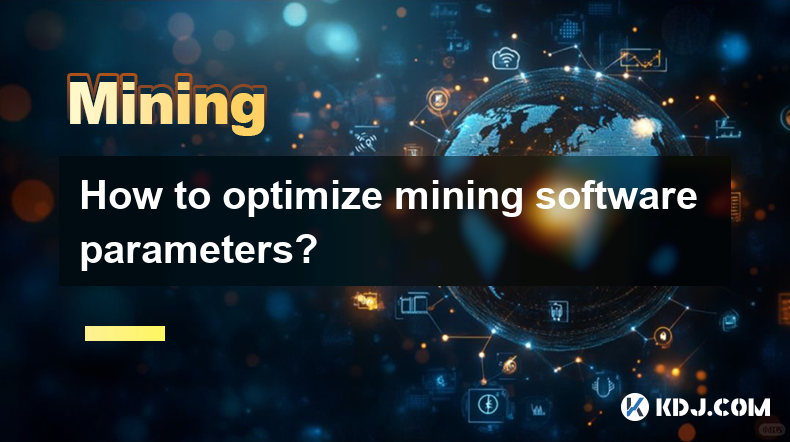
Mining cryptocurrency can be a lucrative endeavor, but to maximize your returns, it's crucial to optimize the parameters of your mining software. This process involves fine-tuning various settings to enhance performance, reduce energy consumption, and increase your overall mining efficiency. In this article, we will explore the key aspects of optimizing mining software parameters, providing you with the knowledge to improve your mining operations.
Understanding Mining Software Parameters
Before diving into optimization, it's essential to understand what mining software parameters are. Mining software parameters are the settings that control how your mining software operates. These include settings for hash rate, power consumption, temperature thresholds, and more. Each parameter can significantly impact your mining performance, so understanding them is the first step toward optimization.
Adjusting Hash Rate Settings
The hash rate is a critical parameter that determines how many calculations your mining rig can perform per second. To optimize your hash rate, you need to find the sweet spot where your rig operates at peak performance without overheating or consuming excessive power.
- Open your mining software and navigate to the settings or configuration section.
- Locate the hash rate setting, which might be labeled as "Intensity" or "GPU Engine Clock."
- Increase the hash rate incrementally by small amounts, such as 5-10%, and monitor your rig's performance.
- Check the temperature and power consumption after each adjustment to ensure they remain within safe limits.
- Continue adjusting until you find the optimal hash rate that maximizes performance without compromising stability.
Managing Power Consumption
Power consumption is another crucial parameter to optimize, as it directly affects your mining profitability. Reducing power consumption can lower your operational costs and increase your net earnings.
- Access the power settings in your mining software, often found under "Power Management" or similar.
- Adjust the power limit to a lower value, typically by 5-10% at a time.
- Monitor your rig's performance to ensure the hash rate remains stable.
- Continue reducing the power limit until you find the lowest setting that maintains your desired hash rate.
Setting Temperature Thresholds
Temperature management is vital to prevent hardware damage and maintain consistent performance. Setting appropriate temperature thresholds can help you avoid overheating issues.
- Navigate to the temperature settings in your mining software, usually labeled as "Temperature Limit" or "Thermal Throttle."
- Set a safe temperature threshold based on your hardware's specifications, typically around 75-80°C for GPUs.
- Enable automatic fan control if available, to ensure your rig cools down efficiently.
- Monitor temperatures regularly to ensure they stay within the set thresholds.
Optimizing Network Settings
Network settings can also impact your mining efficiency, particularly in terms of latency and connection stability. Optimizing your network settings can help reduce downtime and improve your mining performance.
- Check your internet connection to ensure it is stable and fast enough for mining.
- Configure your mining software to use the most reliable mining pool server.
- Adjust the network timeout settings to a reasonable value, typically around 30-60 seconds, to handle temporary connection issues without interrupting mining.
- Use a wired connection if possible, as it is generally more stable than Wi-Fi.
Fine-Tuning Algorithm Selection
Different cryptocurrencies use different mining algorithms, and selecting the right one can significantly impact your mining efficiency. Fine-tuning your algorithm selection involves choosing the algorithm that best suits your hardware and the current market conditions.
- Research the algorithms supported by your mining software and the cryptocurrencies they mine.
- Compare the profitability of different algorithms using online calculators and market data.
- Select the algorithm that offers the best balance of profitability and hardware compatibility.
- Monitor market trends and be prepared to switch algorithms if necessary to maximize your returns.
Implementing Overclocking and Underclocking
Overclocking and underclocking are advanced techniques that can further optimize your mining performance. Overclocking increases your hardware's performance, while underclocking reduces power consumption.
- For overclocking, start by increasing the GPU core clock and memory clock by small increments, such as 5-10%.
- Monitor the hash rate and temperature to ensure stability and performance gains.
- For underclocking, decrease the GPU core clock and memory clock by small increments, monitoring the hash rate and power consumption.
- Adjust until you find the optimal settings that balance performance and efficiency.
Regular Monitoring and Adjustments
Optimization is an ongoing process, and regular monitoring and adjustments are necessary to maintain peak performance.
- Use monitoring tools provided by your mining software to track hash rate, power consumption, and temperature.
- Set up alerts for critical thresholds, such as high temperatures or low hash rates.
- Review and adjust your settings periodically to account for changes in hardware performance or market conditions.
- Stay informed about software updates and new features that could further enhance your mining efficiency.
Frequently Asked Questions
Q: Can optimizing mining software parameters damage my hardware?
A: When done correctly, optimizing mining software parameters should not damage your hardware. However, it's crucial to monitor temperatures and power consumption closely and make adjustments gradually to avoid overheating or excessive strain on your components.
Q: How often should I adjust my mining software parameters?
A: The frequency of adjustments depends on various factors, including changes in hardware performance, software updates, and market conditions. As a general rule, review and adjust your settings at least once a month to ensure optimal performance.
Q: Is it necessary to use different parameters for different cryptocurrencies?
A: Yes, different cryptocurrencies often use different mining algorithms, which may require different settings for optimal performance. Always research the specific requirements for each cryptocurrency you mine and adjust your parameters accordingly.
Q: Can I use the same parameters for multiple mining rigs?
A: While you can start with the same parameters, each mining rig may have unique hardware specifications and performance characteristics. It's best to optimize each rig individually to ensure the best possible performance.
Disclaimer:info@kdj.com
The information provided is not trading advice. kdj.com does not assume any responsibility for any investments made based on the information provided in this article. Cryptocurrencies are highly volatile and it is highly recommended that you invest with caution after thorough research!
If you believe that the content used on this website infringes your copyright, please contact us immediately (info@kdj.com) and we will delete it promptly.
- Public Companies Added Nearly 100,000 Bitcoin To Their Balance Sheets During Q1 2025
- 2025-04-16 07:15:16
- Amidst the Stormy Seas of the Crypto World, a New Titan Emerges—BlockDAG
- 2025-04-16 07:15:16
- Bitcoin (BTC) reclaims $85,000, setting the stage for altcoins to rally
- 2025-04-16 07:15:14
- The Pi Network token price has increased by more than 14% over the past week.
- 2025-04-16 07:15:14
- A wave of capital is flowing out of Ethereum [ETH] and into Tron [TRX]
- 2025-04-16 07:05:14
- Figment to power 3iQ's newly approved Solana exchange-traded fund (ETF)
- 2025-04-16 07:05:14
Related knowledge
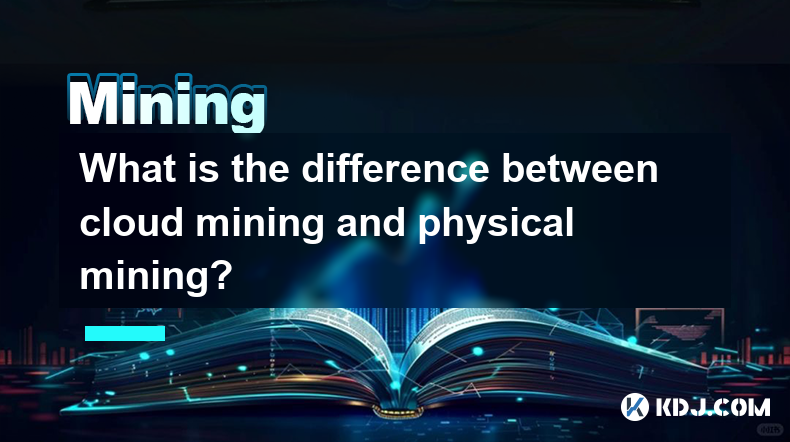
What is the difference between cloud mining and physical mining?
Apr 16,2025 at 01:49am
What is the difference between cloud mining and physical mining? In the world of cryptocurrencies, mining is the process by which new coins are generated and transactions are verified and added to the blockchain. There are two primary methods of mining: cloud mining and physical mining. Understanding the differences between these two approaches can help...
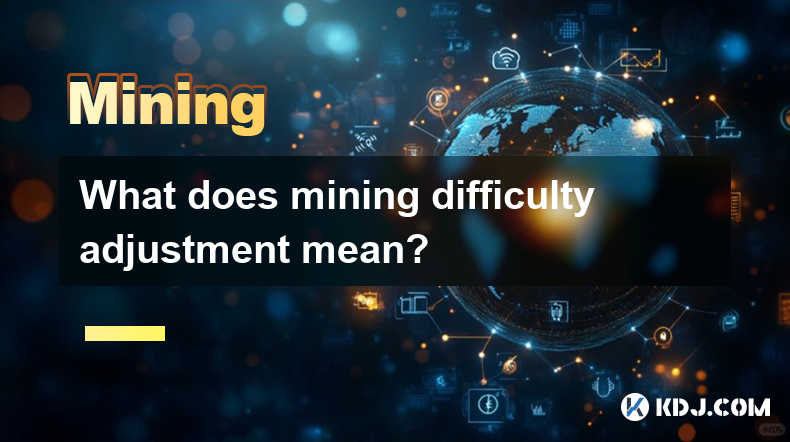
What does mining difficulty adjustment mean?
Apr 16,2025 at 12:42am
What does mining difficulty adjustment mean? Mining difficulty adjustment is a crucial mechanism in blockchain networks, particularly in Proof of Work (PoW) systems like Bitcoin. It ensures that the rate at which new blocks are added to the blockchain remains consistent, despite fluctuations in the total computational power (hash rate) of the network. T...
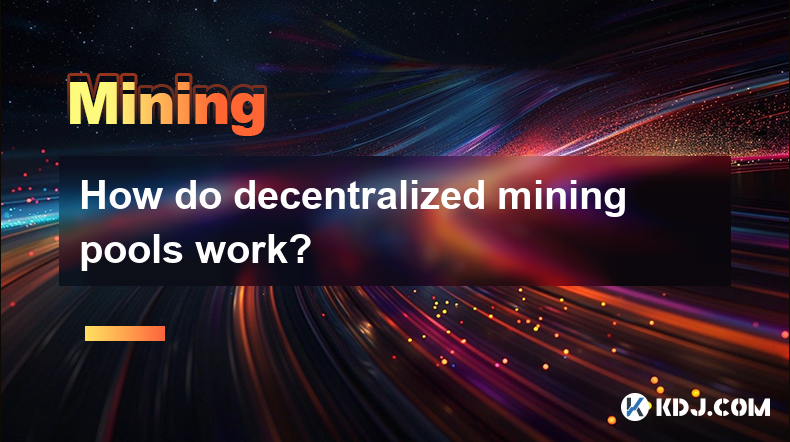
How do decentralized mining pools work?
Apr 16,2025 at 05:42am
Decentralized mining pools represent a significant evolution in the world of cryptocurrency mining, offering a more democratic and transparent approach compared to traditional centralized pools. In this article, we will explore the mechanics of decentralized mining pools, their benefits, and how they operate within the cryptocurrency ecosystem. What are...
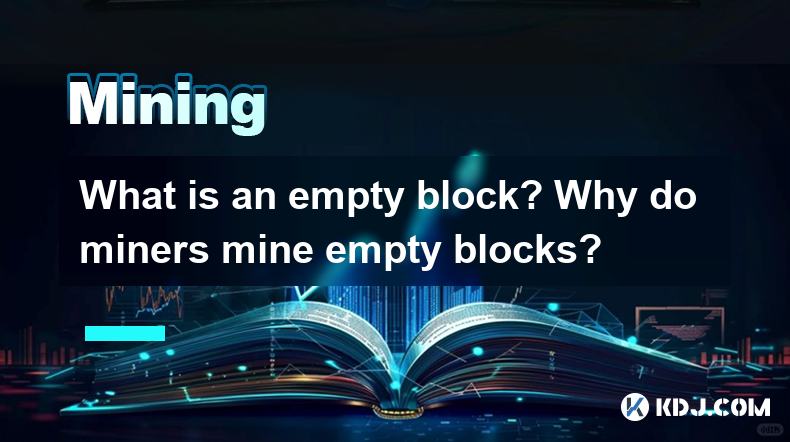
What is an empty block? Why do miners mine empty blocks?
Apr 16,2025 at 01:28am
What is an Empty Block?An empty block in the context of blockchain technology, particularly in cryptocurrencies like Bitcoin, refers to a block that contains no transactions other than the coinbase transaction. The coinbase transaction is a special transaction in which new bitcoins are generated and awarded to the miner who successfully mines the block....

What is the KawPow algorithm?
Apr 16,2025 at 06:43am
The KawPow algorithm is a proof-of-work (PoW) consensus mechanism specifically designed for the Ravencoin blockchain. It evolved from the earlier X16R and X16RV2 algorithms, aiming to enhance the security and efficiency of the mining process. KawPow was introduced to address the issues associated with ASIC (Application-Specific Integrated Circuit) miner...
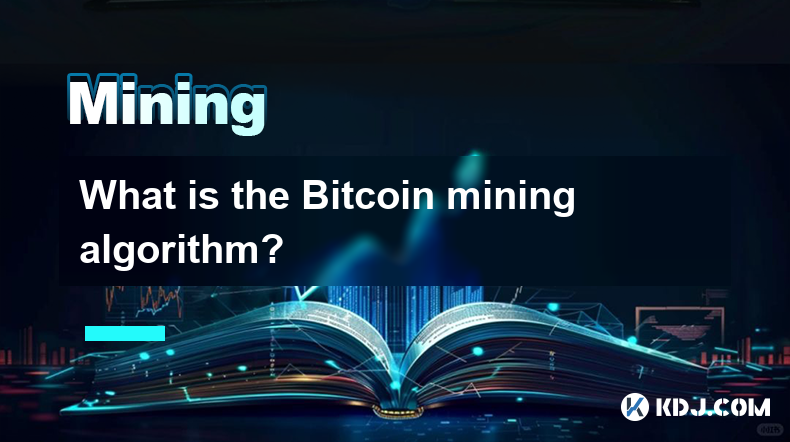
What is the Bitcoin mining algorithm?
Apr 15,2025 at 08:00pm
What is the Bitcoin Mining Algorithm? Bitcoin mining is a crucial process that maintains the integrity and security of the Bitcoin network. At the heart of this process lies the Bitcoin mining algorithm, which is responsible for verifying transactions and adding them to the blockchain. Understanding this algorithm is essential for anyone interested in t...

What is the difference between cloud mining and physical mining?
Apr 16,2025 at 01:49am
What is the difference between cloud mining and physical mining? In the world of cryptocurrencies, mining is the process by which new coins are generated and transactions are verified and added to the blockchain. There are two primary methods of mining: cloud mining and physical mining. Understanding the differences between these two approaches can help...

What does mining difficulty adjustment mean?
Apr 16,2025 at 12:42am
What does mining difficulty adjustment mean? Mining difficulty adjustment is a crucial mechanism in blockchain networks, particularly in Proof of Work (PoW) systems like Bitcoin. It ensures that the rate at which new blocks are added to the blockchain remains consistent, despite fluctuations in the total computational power (hash rate) of the network. T...

How do decentralized mining pools work?
Apr 16,2025 at 05:42am
Decentralized mining pools represent a significant evolution in the world of cryptocurrency mining, offering a more democratic and transparent approach compared to traditional centralized pools. In this article, we will explore the mechanics of decentralized mining pools, their benefits, and how they operate within the cryptocurrency ecosystem. What are...

What is an empty block? Why do miners mine empty blocks?
Apr 16,2025 at 01:28am
What is an Empty Block?An empty block in the context of blockchain technology, particularly in cryptocurrencies like Bitcoin, refers to a block that contains no transactions other than the coinbase transaction. The coinbase transaction is a special transaction in which new bitcoins are generated and awarded to the miner who successfully mines the block....

What is the KawPow algorithm?
Apr 16,2025 at 06:43am
The KawPow algorithm is a proof-of-work (PoW) consensus mechanism specifically designed for the Ravencoin blockchain. It evolved from the earlier X16R and X16RV2 algorithms, aiming to enhance the security and efficiency of the mining process. KawPow was introduced to address the issues associated with ASIC (Application-Specific Integrated Circuit) miner...

What is the Bitcoin mining algorithm?
Apr 15,2025 at 08:00pm
What is the Bitcoin Mining Algorithm? Bitcoin mining is a crucial process that maintains the integrity and security of the Bitcoin network. At the heart of this process lies the Bitcoin mining algorithm, which is responsible for verifying transactions and adding them to the blockchain. Understanding this algorithm is essential for anyone interested in t...
See all articles























































































